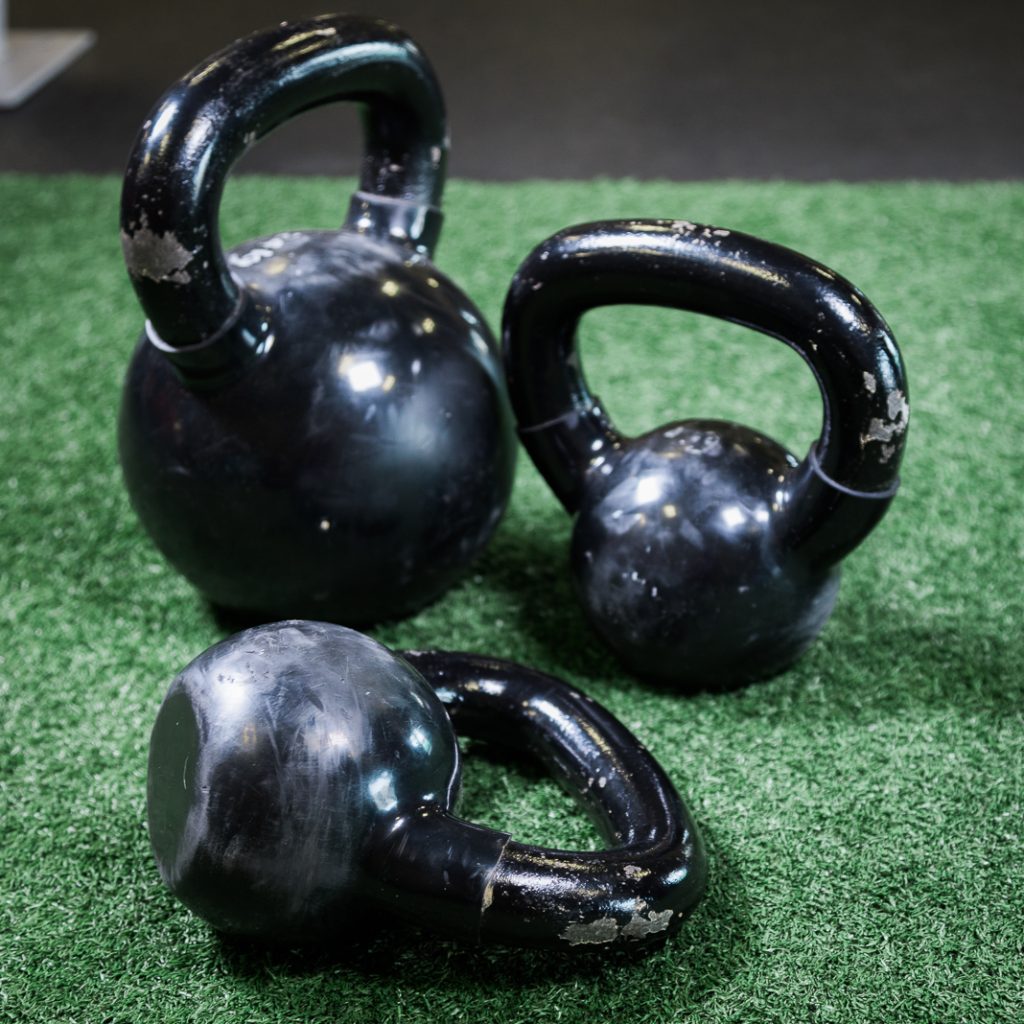Basic Workout Equipment
As you delve into your My Viva Plan workouts you will begin to encounter a variety of exercise equipment. Dumbbells, kettlebells, and medicine balls all fall into the ‘free weight’ category because they are all weights that are not attached to some other piece of equipment. These types of free weight exercises will stress the body differently than exercises that use machines since they require engagement from multiple muscle groups.
Take for example a Standing Bicep Curl. By using free weights not only are we working our bicep but we also engage balancing muscles in our feet and legs, core muscles in our torso and shoulder muscles to maintain our arm’s position throughout the movement. Despite having similar effects, different free weights have significant variation between their shapes and applications. In this article we will explore what dumbbells (DB), kettlebells (KB), and medicine balls (MB) are and why we use one over the other.
The first piece of equipment you will encounter in your workouts is the dumbbell. Dumbbells are one of the most commonly used free weights and consist of a short bar or handle with two weights attached to either side.

With a simple handle and clear markings, dumbbells are easy to pick up and use for various exercises. The handle design is also great for improving several muscle groups in the forearm and hand which can increase grip strength. Dumbbells can be used during simple exercises (single joint, such as a bicep curl) or complex exercises (multi joint, such as a squat to shoulder press) This makes them an extremely versatile piece of equipment allowing you to do strength, endurance, and power training as well as lower body, core, and upper body training all at the same time.
Some individuals may find dumbbells hard on their fingers or wrists due to arthritis, a previous injury or other chronic pain issues. In this case it could be beneficial to experiment with various angles of holding the dumbbell or using a different piece of equipment such as a kettlebell or medicine ball.
As you move into the intermediate and advanced workouts of My Viva Plan you will be given the option to incorporate kettlebells or medicine balls into your workouts. Kettlebells (KBs) are shaped like a large ball with a single curved handle on it.

Though KBs can be used for nearly all the same exercises as DBs, KBs are more often used for full body exercises that involve dynamic, explosive movement. Swings or presses where the KB swings freely at the hand from one side of the forearm to the other are quite common (e.g. the Kettlebell Snatch). The shape of the ball and handle allow for comfortable transition of the weight as well as allow the weight to remain in line with our center of gravity without putting excessive stress on our joints. KBs are often used in more intermediate and advanced training for increased ability to perform explosive, dynamic, full body movements.
KBs also require a great deal of grip strength therefore it is important to note any previous or existing injuries in the hands, wrists, and forearms. Performing explosive, dynamic movements without significant risk of injury, often requires significant practice. Be sure to start with light weights to get the exercise movement “right” before attempting heavy lifts with KBs. This disclaimer applies to all weight lifting exercises, but KB movements often have some added risk factors due to their dynamic and explosive characteristics.
The other piece of equipment you will be introduced to in Intermediate and Advanced workouts is the Medicine Ball (MB). MBs come in various weights and styles but essentially are just a padded weighted ball (usually 5lbs to 25lbs) with either a rubber or leather exterior.

These are not to be mistaken with exercise balls which, though still made of rubber, are generally much larger and inflated with air. MBs have several uses but in My Viva Workouts they are used to focus on increasing the difficulty of an exercise by adding a balancing element to increase power and to provide variety.
For example, by placing our toes on a MB during a classic Push Up we now force our core, legs, and feet to work harder in order to resist the MB’s tendency to roll from side to side during the movement. For the more explosive movements we often see something called a Medicine Ball Slam. In these exercises we forcefully push the MB through a specific pattern and release it against a surface such as a wall or the floor. These exercises are designed to increase our ability to generate force during a single contraction. This can be considered to be functional training as it mimics movements in real life or sports where we throw a ball or are required to push off from something with significant force.
As far as providing alternatives for specific KB and DB exercises, one of the main reasons is to do with the handles. MBs have no handles therefore more energy is required by the larger muscles in our arms to hold them compared to KBs and DBs where grip strength is required. For those who struggle with discomfort associated with KB and DB use, MBs could be a solution that allows you to perform similar free weight exercises without the discomfort.
Dumbbells, kettlebells, and medicine balls are all excellent forms of free weight training. Whether you are just starting weight training, working on balance, or trying to improve power and dynamics, all have a role to play. When you start your exercises, try experimenting with all three and see what works best for you!
